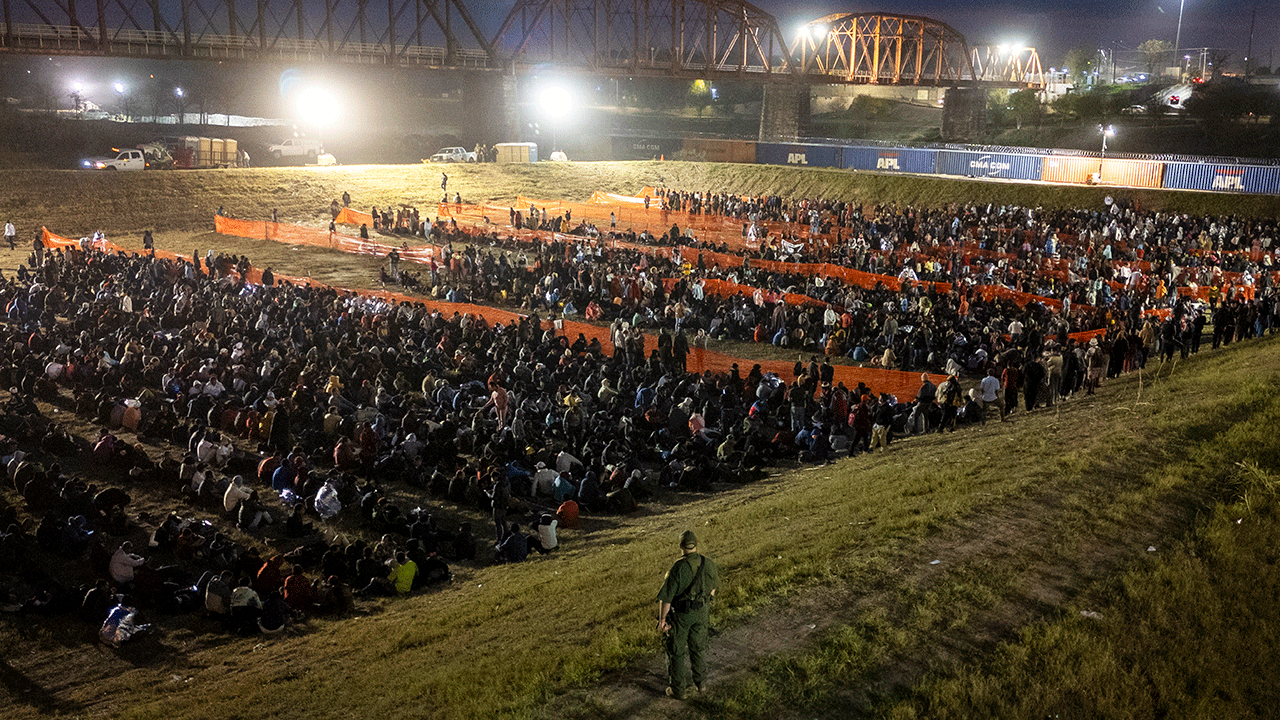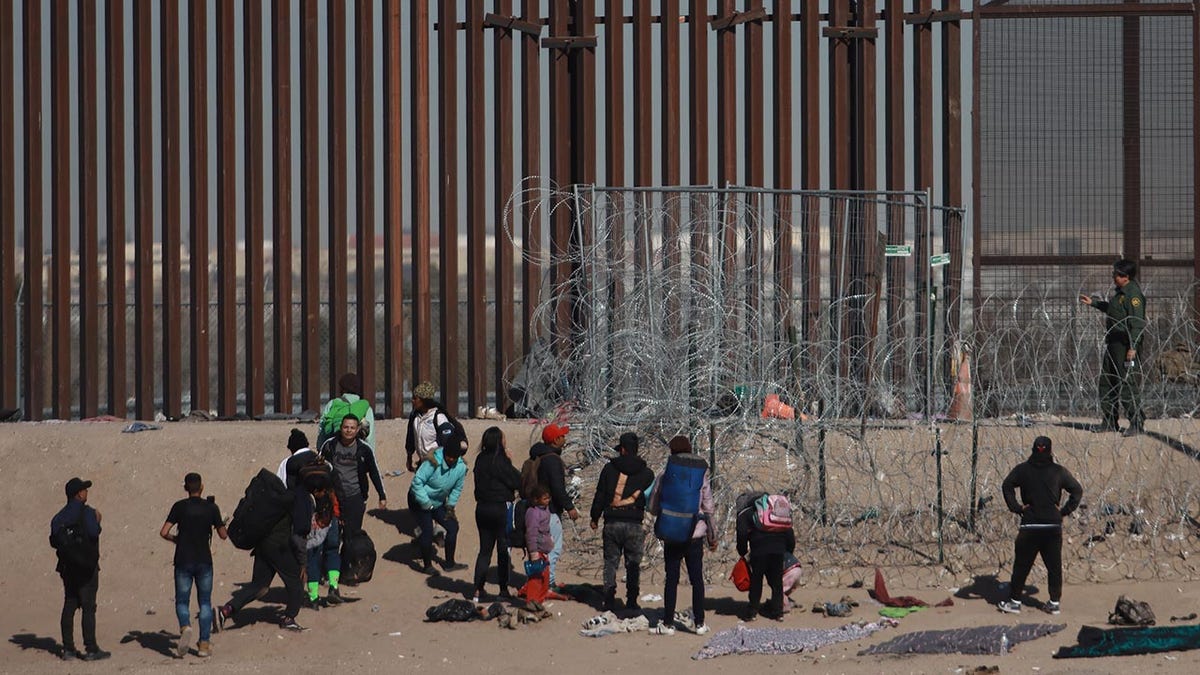Sen. Lankford says Senate bill ‘flips the script’ on Biden border policy
Sen. James Lankford, R-Okla., breaks down what is in the new border security Senate bill
The long-awaited $118 billion supplemental spending deal, which includes funding for Ukraine, Israel and measures to stem the historic crisis at the southern border, was released late Sunday by Senate lawmakers ahead of an expected vote in the upper chamber later this week.
The package has the backing of Senate leaders and the Biden administration, who have said the funding is for the two U.S. allies ($60 billion for Ukraine and $14 billion for Israel) coupled with a bipartisan agreement that will provide approximately $20 billion to control illegal immigration at the southern border, where numbers hit a record 2.4 million encounters in FY 23.
"The bipartisan agreement in the Senate is tough, fair, and takes meaningful steps to address the challenges our country faces after decades of Congressional inaction," Homeland Security Secretary Alejandro Mayorkas said in a statement.
GOP SENATORS DEMAND ‘ADEQUATE TIME’ TO REVIEW BORDER SECURITY BILL
But it faces significant opposition from Republicans and other conservatives, who say it does not do enough to tackle the border crisis and stop releases into the interior. Some liberal Democrats have also objected to the bill, arguing that it will hurt migrants seeking asylum.
Here are the main parts of the immigration deal:

A U.S. Border Patrol agent watches more than 2,000 migrants at a field processing center on Dec. 18, 2023, in Eagle Pass, Texas. (John Moore/Getty Images)
‘Border Emergency Authority’
At the heart of the deal is a new three-year authority, similar in some ways to the COVID-era Title 42, which allows officials to shut down entries into the U.S. at the southern border.
This authority comes into play when there is a rolling seven-day average of 5,000 encounters a day, or 8,500 encounters in a single day. At that point, DHS is mandated to expel all migrants without processing them, with the exception of unaccompanied children. That authority can only end when encounters drop at least 25% for seven days, and DHS has 14 days to end the authority.
However, the president can suspend the authority for up to 45 days, and by the third calendar year, the DHS secretary is limited to using it for half the calendar year. DHS can also implement the authority at its discretion when the average number of encounters exceeds 4,000 a day.
MIGRANT CRISIS BROKE NEW RECORD IN DECEMBER WITH 302K ENCOUNTERS, OFFICIALS CONFIRM
For those who are processed, single adults are still removed, family units are released into the U.S., and asylum cases are fast-tracked through U.S. Citizenship and Immigration Services. ICE detention is also increased to approximately 50,000 from the current 34,000.
Work permits for migrants
The bill expedites two-year work permits for those who are released into the interior, meaning they can work immediately rather than wait for months to receive their permit as is the case now. It’s a demand that has been made for months by Democratic mayors in cities like New York and Chicago, where they have seen enormous numbers of migrants. Those permits would be revoked if the migrant is denied asylum.
The bill also includes legal requirements that migrants always be provided with information about their rights, including their right to access counsel. Children will also receive government-funded legal counsel.
Asylum rules
The bill tightens the language for the initial "credible fear" screening faced by migrants who claim asylum as they are being removed via expedited removal – a practice that is expected to expand as part of the bill.
Migrants will now be expected to prove "reasonable possibility" of persecution if returned to their home country, rather than "significant possibility." It also moves consideration of bars to asylum, including a criminal conviction, into the initial screening stage rather than later in the process.
It also creates a new eligibility bar known as "internal relocation," which means asylum can be denied if a migrant could have sought safety in their home country instead of fleeing to the U.S. Asylum is now expedited, with U.S. Citizenship and Immigration Services (USCIS) officials being granted the authority in statute to grant asylum rather than immigration judges. It's similar to an asylum rule the Biden administration put into place last year and is expected to reduce the process from years to months.
It would also end the use of humanitarian parole to release migrants into the U.S. at the border, including the use of the CBP One app for such purposes.

Migrants try to reach the United States border in Ciudad Juarez, Mexico, on Jan. 17, 2024. (Christian Torres/Anadolu via Getty Images)
Border funding, staffing
The bill includes billions in funding for additional staff and infrastructure at the border, including 1,500 new Customs and Border Protection (CBP) personnel, over 4,300 new asylum officers,1,200 new Immigration and Customs Enforcement (ICE) personnel, and 100 new immigration judge teams.
It also includes $1.4 billion in FEMA funding for non-governmental organizations and cities to help settle migrants and $650 million to build and reinforce the border wall. It will also provide $450 million to countries to help them remove and integrate illegal immigrants back into their countries.
Also provided will be funding for 100 inspection machines to detect fentanyl, accompanied by new laws to prevent fentanyl trafficking into the U.S.
Increased legal immigration pathways
Separate from the border, the bill includes work permits and temporary visas for 250,000 "documented dreamers" – children of immigrants on temporary work visas who have since become adults.
The bill also raises the cap on the number of green cards by 50,000 a year, the majority of which will be family-based. It also establishes an expedited pathway for Afghans who were evacuated to the U.S. to get green cards.
Fox News' Bill Melugin and Aishah Hasnie contributed to this report.






